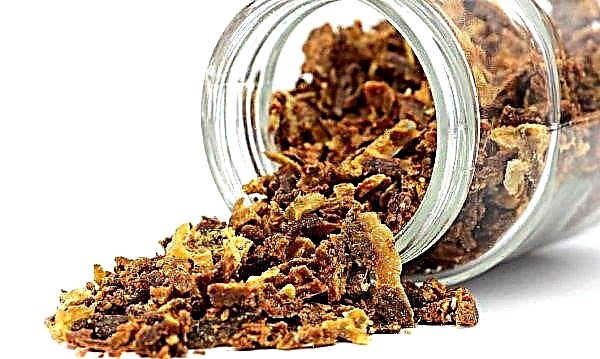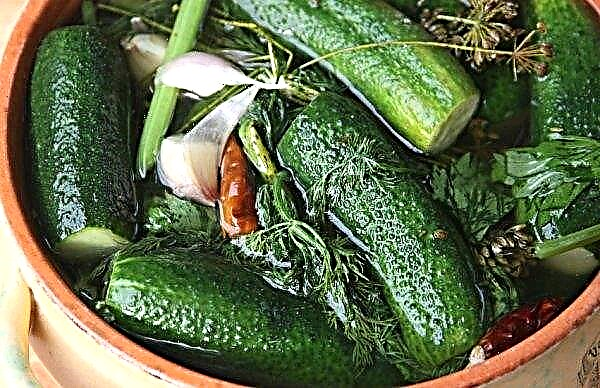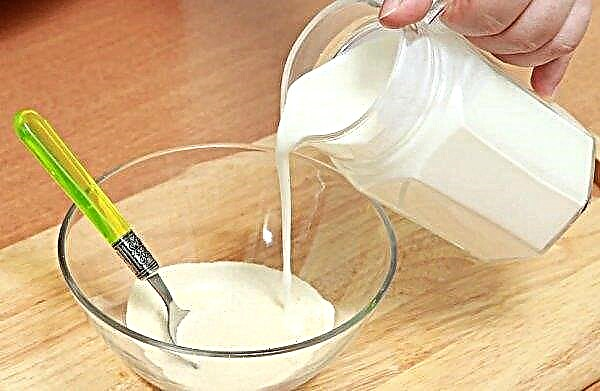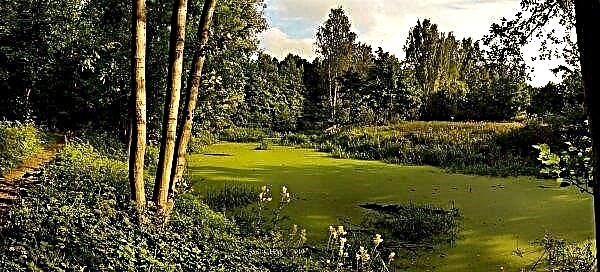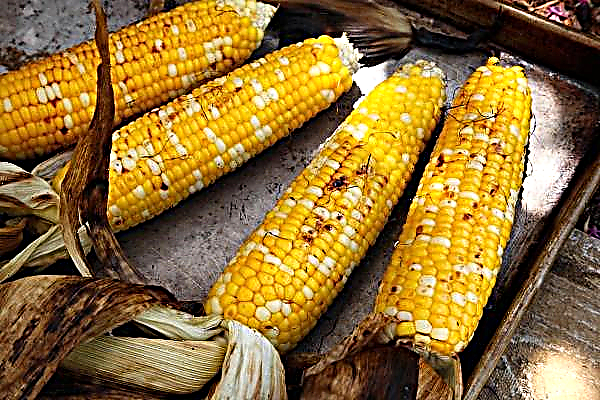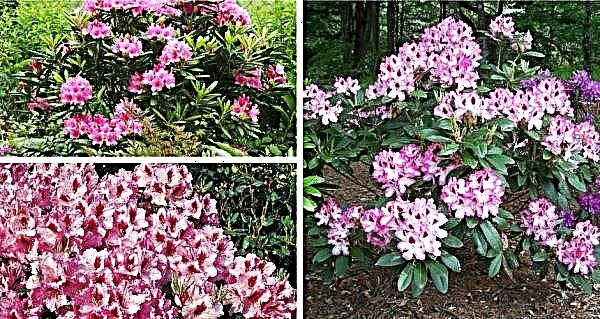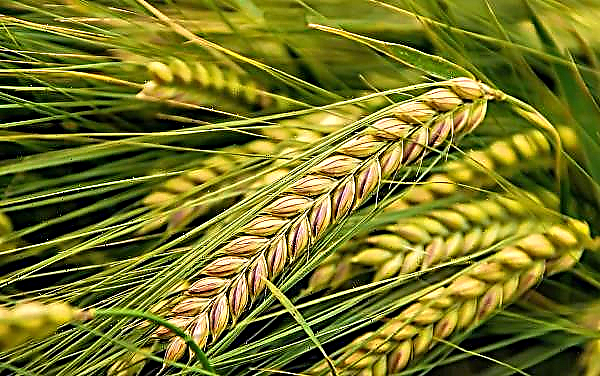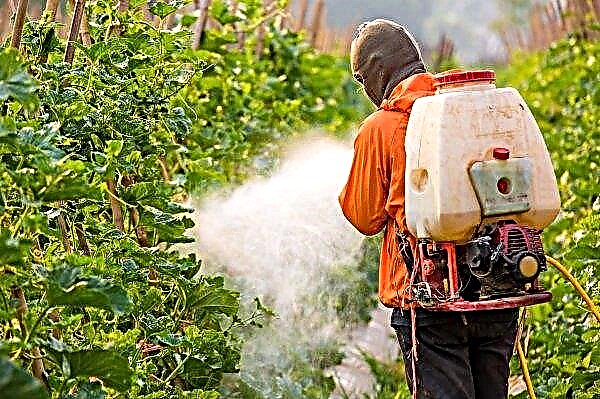Private greenhouses are usually of limited size, and the gardener may have a choice which crop to give preference to. But you really want to treat yourself to fresh tomatoes, cucumbers and peppers at the same time. The article will help you figure out if this is possible.
Advantages and disadvantages of growing simultaneously
Of course, the joint cultivation of various vegetables is quite possible. But, as you know, there is such a thing as compatibility of cultures, a desirable and undesirable neighborhood. Some vegetables cannot grow nearby simply because of the completely different conditions that they require for normal development. These are criteria such as humidity, light mode, etc.
But if you still decide to grow different crops together, you should first understand the advantages and disadvantages of such a planting.
- Among the main advantages are the following:
- saving volume of the greenhouse;
- savings in heating and lighting costs, which will inevitably increase when using several greenhouses;
- isolated soil is good for growing plants that require special care;
- properly organized drip-type watering, as well as the use of window leaves, allow you to change the temperature regime and microclimate.
- It should be said about the characteristic disadvantages of joint landings:
- risk of dusting;
- pests and diseases characteristic of one species can be transmitted to a neighbor;
- in a small space it is extremely difficult to create conditions acceptable to all inhabitants;
- rather high probability of thickening of beds.
Placing crops in a greenhouse
By planting different crops in a greenhouse together, one of them is made the main or basic, the rest are companions of the basic vegetable. Cucumbers or tomatoes are most often used as the main one.
The joint cultivation of two different species that require opposite conditions is a difficult task, quite difficult to carry out, especially in the small volume of a small home greenhouse.
Did you know? The leading country in terms of the number of greenhouses is Holland. If you add up the area of all the greenhouses located in this small country, even by European standards, you get a rectangle with sides 10 × 10.5 km.
Tomatoes absolutely cannot tolerate high humidity, the most moderate watering is enough for them, and they need potassium-phosphorus fertilizers. Cucumbers need abundant watering and a microclimate with high, almost one hundred percent humidity. Moisture deficiency adversely affects them: the fruits are smaller and acquire a bitter taste. Fertilize the vegetable is preferable to nitrogen-containing organics (litter, mullein).
So that for the normal growth and development of various cultures, their placement should be considered in advance, but for this it is necessary to know which species can grow nearby and which cannot. The same tomatoes can be separated from the cucumbers by a partition, which will make it possible to make a zone with a wetter microclimate or, conversely, a drier corner in a greenhouse with high humidity. The partition should be made of waterproof material, for example, the same polycarbonate.
Video: What can be planted in one greenhouse
Companion plants
Near crops that have a long growing and fruiting period, they grow well:
- White cabbage;
- salad;
- green onions;
- radish;
- spices.
When co-growing cucumbers and other crops, it should be borne in mind that many varieties of cucumbers are quite strongly pulled up. For this reason, it is better to plant cucumbers in the middle, and for example, squash and squash - at the edges. Thus, cucumbers will not obscure other vegetables.

Below are some cultures that get along well together:
- tomatoes - cabbage, corn, onions, leeks, carrots;
- cucumbers - cabbage, kohlrabi, onions, corn, dill, legumes, beets;
- radish, radish - peas, strawberries, kohlrabi cabbage, carrots, parsnips, tomatoes;
- cabbage - strawberries, carrots, cucumbers, tomatoes, radishes, lettuce, spinach, celery, dill, beans;
- potatoes - beans;
- carrots - peas, strawberries, cabbage, onions and leeks, tomatoes, radishes, lettuce, spinach;
- Spinach is well compatible with almost all crops except beets.

Enemy plants
Some plants cannot be called very well compatible, but they are not enemies, rather, their proximity to the garden can be called acceptable or permissible. Such pairs include, for example, tomatoes and strawberries, potatoes and radishes, cucumbers and parsnips.
But there are plants whose co-cultivation in a greenhouse is highly undesirable; for good reason they can be called enemies. Particular attention should be paid to such a moment as the complete incompatibility of cultures. Of the most characteristic antagonist plants, the following combinations can be distinguished:
- tomatoes - peas, potatoes, cucumbers, dill;
- cucumbers - tomatoes, potatoes, radishes, radish;
- cabbage - onions, leeks, peas;
- potatoes - cucumbers, tomatoes, beets, celery, peas;
- carrots - beets, dill, beans;
- radish, radish - cucumbers, onions.
Important! Lettuce should not be planted next to crops that are particularly sensitive to parasites, as it attracts slugs. But greens, on the contrary, can repel pests. In addition, it takes up little space, and is quite expensive in winter. Growing greens for sale, you can significantly increase the profitability of the greenhouse, having recouped part of the costs of maintenance.
Ground preparation in the greenhouse
Co-cultivation of various crops requires special preparation. The top layer of the substrate is changed every year, the soil before planting is shed with a solution of copper sulfate or potassium permanganate. Top-dressing is added to the substrate: humus, sifted ash, a little superphosphate and potassium sulfate.
In the event that you are engaged in growing seedlings in the greenhouse, organize a separate zone for these purposes. When transplanting seedlings to a place of constant growth, make sure that they are absolutely healthy. If pest larvae or symptoms of diseases are found, seedlings should be cured first and only then planted.

The most acceptable is the joint cultivation of hybrids with early ripening. Typically, such hybrids have a high yield and disease resistance. As a preventative measure from the moment of planting, young plants are regularly treated with a pink solution of potassium permanganate, Fitosporin, or other drugs with a similar effect.
Plant Care Rules
Caring for plants in a greenhouse has its own characteristics and differences from events held in the open ground. Separately, it should be said about the nuances of caring for jointly grown crops.
Did you know? In 1240, Count of Holland and Zealand Wilhelm arrived in Cologne on a visit. In his honor, they organized the first European winter garden-greenhouse, where magnificent flowers grew and bloomed, while the street was freezing. This lanethe formans were so impressed with the public that the Inquisition accused Albert Magnus, a botanist of an unprecedented show, of having connections with the devil.
Watering and humidity
The organization of optimal humidity is perhaps the most important and difficult task when growing various crops in one greenhouse. Primarily, you need to know exactly what mode of irrigation and air humidity this or that culture needs, and, based on this information, plant plants.
Species that require good aeration are located closer to the windows and doors (tomatoes). The same applies to vegetables that tolerate cold well (cabbage, beans).

In the event that you want to grow completely incompatible vegetables that need a completely different moisture regime (tomato-cucumber, cabbage, onion), you will have to make partitions. In principle, there are no special difficulties in the manufacture of two compartments in one design, especially if two doors on opposite walls are provided in the greenhouse.
You can do without the equipment of a special compartment with a rigid partition, it is quite acceptable to use a separation curtain made of polyethylene. The curtain should isolate as much as possible one compartment from another - its dimensions in height should be from floor to ceiling and from wall to opposite wall. An indispensable condition for this method of growing should be the presence of a window on the wall opposite the door.

The layout is as follows:
- In a zone located near the entrance, plant tomatoes. Fence this part from the rest of the greenhouse with a plastic curtain.
- Cucumbers are planted behind a curtain, and eggplants are planted behind cucumbers. Further, near the wall opposite the entrance, on which the window is located, peppers.
In this case, the tomatoes will be isolated from the rest of the room, which will have the increased humidity required for all three crops growing there. The regime of watering and humidity for tomatoes will be individual. The remaining three crops are arranged in such a way as to best meet their needs for moisture and aeration: in the middle the most hygrophilous cucumbers, closer to the window (window) - eggplant, next to the window - peppers that need more sun.

Light mode
Even compatible cultures may have different lighting requirements. They solve this question quite simply: photophilous plants (eggplant, pepper) are placed near the walls, and those who like shade are placed in the middle of the greenhouse.
In addition, additional types of lighting are used in greenhouses (fluorescent lamps, sodium, mercury, metal halide, LED, etc.), some of which, in addition to light, provide additional heat. Using an additional light source and selecting the desired spectrum, it is possible to achieve the optimal light regime for various cultures. For this, the lamps are made adjustable in height.
Separately, it should be said about the spectrum generated by a particular light source. For example, fluorescent lamps have a good effect on flower growth, and the sodium spectrum is most suitable for plants during flowering. LEDs of three colors (red, blue and green), assembled on one block, give a full range.
Pest and Disease Control
In the fall, before preparing the greenhouse for winter, they process the premises from diseases and pests. Urea and sulfur fumigation are used for disinfection. A similar procedure is performed in the spring.
Important! For cucumbers, one of the best compacting crops is radish or radish. It can be planted along the edge of the cucumber rows, on the sunny side.
Spring treatment begins with washing the floor and the room. Then the soil is shed with boiling water and covered with a film, so that the temperature for a while is kept at a high level.
The soil, ceiling and walls are treated with a 1% solution of copper sulfate, potassium permanganate or formalin. Wooden racks, if any, are bleached with the addition of vitriol. In this way carry out prophylaxis against gray rot, scab, rust and late blight.
Then they fumigate the room with sulfur (checkers or lump). When fumigating sulfur fumes kill all possible germs and fungal sporespenetrating the most inaccessible places of the structure. Before the procedure, all ventilation openings and doors are tightly closed for a week, after which the room is well ventilated.

10-15 days before planting the first plantings, the room is treated with drugs that prevent the development of fungus and bacteria (Fitosporin, Baxis, Pseudobacterin). These funds are a preventive measure against rust, alternariosis, snow mold, etc. As a prophylaxis against spider mites, the following agents are used: Iskra Bio (1 ml / 5 l of water), Fitoverm (4 ml / 5 l of water).
There is a pest control method using predator parasites, which are acquired in the laboratory. One of these is phytoseyulus - a predatory tick that destroys the spider mite and does not harm plantings. Populate it at the rate of 60–100 individuals per 1 m². Enkarsia rider successfully fights whiteflies, this useful parasite will be enough to populate 5-10 individuals per 1 m².

Aphids are well destroyed by aphid riders, lacewings and ordinary ladybugs. If the pests have very strongly occupied the greenhouse, it will be necessary to resort to insecticides. Against spider mites, aphids and thrips, Fitoverm is used. The Golden Spark is effective against whiteflies, aphids and thrips. With the help of preparations containing imidacloprid, pests are destroyed in flower plantings. The usual dosage of such drugs is 1 bottle / 7 m².
In addition, the room must be kept clean and prevent the thickening of the space - this leads to the development of diseases and the appearance of pests. Diseases in a greenhouse are much easier to prevent than to cure.
Crop rotation in the greenhouse
The circulation of various crops in a closed limited volume of the greenhouse can solve the problem of joint cultivation of various vegetables. During the year, you can alternate different cultures, growing more or less compatible cultures. All vegetables grown in the greenhouse are divided into:
- basic;
- intermediate (sealing);
- winter.
Previous - these are cold-resistant green crops that have a fast ripening period (spinach, all kinds of salads and salad-type vegetables, for example, Chinese cabbage, dill, radish, early carrots).

The main - vegetables that ripen long enough and love the sun (tomatoes, cucumbers, peppers, eggplant). Seedlings of the main vegetable crops can be planted according to the previous ones. For example, tomatoes can be planted on spinach. With the growth of seedlings of the main vegetable, the previous one that grew before it is gradually removed.
Sealing crops can be planted between rows or along the edges of the main plantings. Such vegetables include lettuce, mustard, radish, Beijing cabbage, leeks. Vegetables of this type are grown until the main crop grows. As the same cucumbers grow, the lettuce and leek growing along the edges are gradually removed, freeing up space for the growing bushes.
Did you know? Ancient Roman carts in which residents grew flowers can be considered a prototype of modern greenhouses. In the afternoon they were taken out to the sun, and at night they were placed in warm sheds.
Maximum fruiting in the greenhouse
In order to get the maximum yield in the greenhouse, it is better to alternate different cultures or plant the most compatiblecreating them the most optimal conditions.
For example, radish and radish are well grown in early spring, in the midst of vitamin deficiency, when fresh vegetables are required. This is a precocious crop that, with good lighting, can produce crops in 19–20 days. In addition, radish tolerates cold well, feels normal at + 2 ° C, although the temperature most favorable for it is +16 ... + 18 ° C.
 The culture is undemanding in care, occupies a small area and is characterized by early maturity - for these reasons radish and radish are good companions for many vegetable crops
The culture is undemanding in care, occupies a small area and is characterized by early maturity - for these reasons radish and radish are good companions for many vegetable crops
In addition, cabbage, kohlrabi, and tomatoes coexist well next to the radish. And if the radish ripens quickly, then the listed vegetables require much more time and sunlight. Growing them together, you can harvest the radish, creating ideal conditions for the companions as well, and then closely tackle tomatoes and cabbage, which also get along well.
Cucumbers A vegetable has quite moderate nursing requirements, and most modern hybrids also have high yields. All varieties and hybrids of vegetables need abundant watering and high humidity. The cucumber can not stand the cold, it is not recommended to ventilate the room more often two to three times a week. They love nitrogen top dressing (a solution of manure, litter). The most acceptable temperature after the first ovaries are formed is 25 ... + 28 ° C, but a temperature above + 30 ° C can be fatal to the crop.
Video: How to extend the fruiting of cucumbers in a greenhouse
Growing cucumbers can be combined with squash, zucchini, cabbage, onions, eggplant and pepper. Crops require in many ways similar conditions, which are quite simple to create: cabbage and pepper are placed near the door and walls, cucumbers are grown in the middle of the room. Cabbage tolerates cold well, so that a periodically opened door will not interfere with its growth. Pepper needs more sunlight - it is advisable to place it near the southern ventilated wall.
Tomatoes For normal growth and development, tomatoes need a lot of sun, moderate watering and humidity. The preferred top dressing is phosphorus and potassium; nitrogen is almost not needed to it. The main threat when growing tomatoes is late blight - a disease whose favorable environment for development is dense planting and high humidity.
For a plentiful harvest it is necessary to water plants only in the basal areaso that moisture does not get on the sheet plate. A good option would be the organization of drip irrigation. In addition, the room needs to be aired every day.

In order to get a decent crop of tomatoes, it is necessary to observe, in addition to the above, the following conditions:
- the temperature should not fall below + 10 ° C, in this case, the metabolic processes in the plant slow down almost to a complete stop;
- minimum soil temperature + 13 ° C, maximum - not higher than + 25 ° C. More accurate indicators depend on the variety;
- maximum air temperature - +25 ... + 27 ° С;
- the temperature in daylight and dark should not differ much.
A good neighborhood option when growing tomatoes are early carrots and cabbage.
Bell pepper (sweet, paprika). Although it is a close relative of the tomato, it is not afraid of moisture, but also loves the sun. It responds very well to top dressing.
To obtain a plentiful harvest, by the time the first pair of true leaves appears, the following composition must be added to the soil (per 1 m²):
- ammonium nitrate - 0.5 tbsp. l .;
- superphosphate - 1.5 tbsp. l .;
- potassium sulfate - 1 tbsp. l
The temperature of the air when growing pepper should not fall below + 13 ° C and rise above + 28 ° C. Recommended air humidity is 65–75%.
Eggplant. The vegetable does not tolerate cold and drafts, but it loves abundant watering, which makes it a very good neighbor for joint cultivation with cucumbers. Although eggplants do not like neighbors in principle, but some are tolerant.
Most in need of watering during flowering and fruiting. He loves top dressing with weak organic solutions. The recommended temperature regime is +23 ... + 28 ° С, humidity - 65–70%.
Important! Whatever crops you grow in the greenhouse, once every five years it is necessary to completely replace the soil with a depth of up to 0.35 m. Alternatively, you can move the structure to another place.
Alternating and correctly combining various vegetable crops, as well as following simple recommendations, you can get abundant harvests and provide long-term fruiting of various vegetables.

Preparing the greenhouse for winter
In order for the greenhouse to serve you properly and for a long time, at the end of the season it must be prepared for winter. The primary task of this event is cleaning the premises. Choose a day without precipitation when the weather is quiet. Remove from the beds all plant debris - both the ground parts and the roots, and everything else.
All annual plants are removed, perennials (strawberries) are carefully examined for the presence of dry, damaged branches, signs of disease. If these are found, the plants are removed, and in the spring young ones are planted in their place.
When you deal with plants, you need to go to the ground. The task is quite time consuming and responsible. The top layer of the substrate (15 cm) under annuals is changed every season. Removed soil is better to move away from the garden. Replace the removed soil can be purchased, but it is better not to do this (perhaps you will be sold the same removed sifted substrate, only with their diseases and bacteria).
Soil, which will be laid instead of removed, must comply with the following requirements:
- have the correct structure, not too small and moderately large fractions;
- rich in humus;
- not contain any mineral fertilizers (the initial substrate should be empty, fertilizing is done later);
- have good moisture absorption;
- have neutral acidity (pH about 7.0):
- must be disinfected.
Video: Replacing the soil in the greenhouse
The composition is very well proven combination in equal parts of high peat, river sand and compost (humus). Further, the substrate intended for replacement is treated with humic acids, for example, the preparation "Flora-S", as indicated in the instructions. Then carry out the disinfection of the soil. You can use traditional spills with manganese boiling water, but it is better to use a hay stick (means "Fitop-Flora-S").
Then carry out the disinfection of the room. Use a solution of urea or smoking with sulfur. Depending on the material, the greenhouses wash and process the frame and coating by the method recommended for this material.
Important! The remains of greenhouse plants cannot be sent to a compost pit, and the earth should not be mixed with garden soil. Even if no diseases have been detected, this should not be done.
If snowy winters are common in your area, you need to strengthen the frame. After that, they go to the final stage - laying a new soil. The soil must be compacted, but not excessively, only to prevent the formation of voids. The soil is leveled with a rake and covered with a layer of fresh (necessary!) Straw 5 cm thick.

After the snow falls, it is buried inside the greenhouse as thick as possible - it will serve as a heater of the soil and moisten it in the spring. After the spring thaw warms the earth 13-15 cm deep, and the air temperature in the structure rises to + 15 ° C during the day, you can plant vegetables that are not afraid of the cold (radishes, cabbage, etc.).
Even a small greenhouse can meet the needs of the average family in various vegetables. And although there are cultures that get along very poorly together, it is still possible to grow them together, you only need to know about some of the features of such cultivation and act accordingly.


